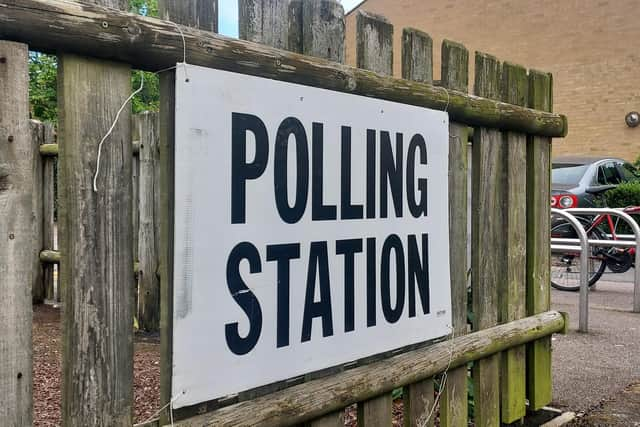Hundreds initially refused ballot after trying to vote without valid ID in Peterborough's local elections
and live on Freeview channel 276
More than 300 people were refused a ballot paper at polling stations during Peterborough's local elections on 4 May because they failed to produce valid voter ID.
Peterborough City Council (PCC) has confirmed that 310 people who tried to vote in the city's elections were initially turned away.
Advertisement
Hide AdAdvertisement
Hide AdOf these, 200 returned later in the day with valid ID, while 110 did not.


This means that, in total, just over one in a hundred people who attempted to vote earlier this month were initially turned away (1.2 per cent) while 0.4 per cent were turned away and didn’t cast a vote at all.
The elections, which saw the Conservative Party strengthen its control of the council in Peterborough, were the first in Britain in which voter ID was required.
The requirement was introduced as part of the Elections Act 2022, with the Government claiming that it will “protect the integrity of our democracy and tackle electoral fraud”.
Advertisement
Hide AdAdvertisement
Hide AdBut critics questioned whether there was truly a need for this and argued that the requirement could disenfranchise voters and harm turnout.
Last year, just 13 cases of alleged personation fraud – the kind of fraud critics say voter ID is attempting to solve – were recorded in the UK, of which only seven were recorded at polling stations, a House of Commons (HoC) report says.
No further action was taken in any of the cases because of a lack of evidence or sufficient evidence.
Whether or not the requirement affected turnout at this year’s local elections will be the subject of an Electoral Commission report expected in September, with further Government analysis expected in November.
Advertisement
Hide AdAdvertisement
Hide AdBut turnout at local elections is typically much lower than at general elections regardless: in Peterborough this year, it was 30.46 per cent overall.
This means, though, that the margins by which candidates are elected can be extremely small, so every vote counts.
In Fletton and Woodston, Labour’s successful candidate won with just 12 more votes than his Conservative rival, while in Bretton – where Labour gained a seat from the Conservatives – the margin was just 78 votes.
The upshot of the elections was that the Conservatives strengthened their control of the council, winning two extra seats, but fell just short of a majority, now holding 30 out of a possible 60 seats.
Labour is the second largest party, with 14 council seats.
Advertisement
Hide AdAdvertisement
Hide AdAccepted forms of voter ID include UK passports – even those which are out of date, as long as they contain the correct name and an up-to-date photo – as well as UK driving licences and certain travel passes.
Also accepted were Voter Authority Certificates, or VACs, which were issued to anyone without a valid form of ID who applied for one ahead of the elections.
According to a HoC report, around 86,000 people applied for a VAC by the deadline, while estimates of the number of people eligible to vote without valid ID range from 925,000 to 3.5 million.
While local authority data from this year’s elections will inform the Electoral Commission’s first report on the effects of voter ID, future elections will also be monitored.
This will include the UK’s next general election, anticipated next year, in which Conservative Prime Minister Rishi Sunak will vie for election with Labour leader Keir Starmer and other candidates.
